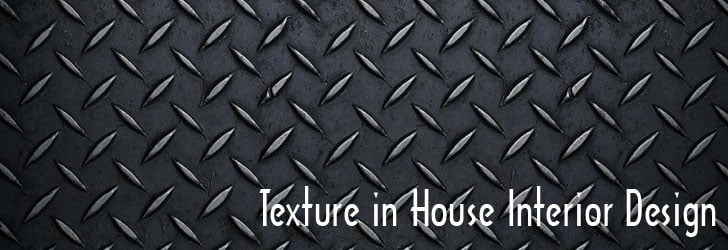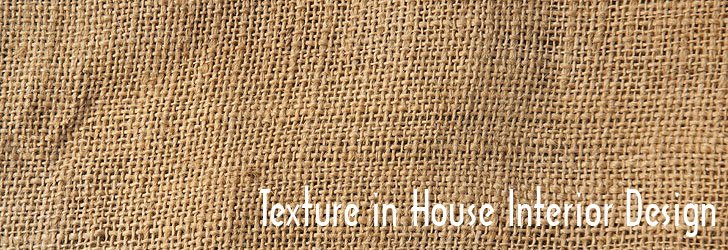Before we talk about interior texture and how it can affect an house interior space, let’s quickly debrief on the term “elements of design”. We know how sometimes we can just look at a room and know that something is missing? All the design components of a complete design are there; color scheme, furniture, decorating items etc, but the entire room or home interior just feels a little flat. If this scenario feels familiar, you are not alone and we might just have the answer you need: Texture.
To create visually appealing spaces, interior designers apply various elements of design like, line and shape, color, texture, pattern, proportion, and light. We discussed how lines, colors could be applied in Interior Designs to communicate a message through a built environment, So, here let’s focus on texture. For some reason, texture seems to always to be an afterthought when it comes to interiors and we’re here to change that. Our reasoning. Texture is the thing that makes a room pop. It’s what brings a perfectly fine design up to enviable levels.
Don’t worry if this all seems new. We’re here to offer you a brief primer on the importance of texture in interior design, as well as how to effectively apply its design tenants in your own home. You’ll be crafting complexly textured rooms in no time flat.
Texture in Interior Design
What is Mean By “Texture Of Interior Decoration”?
Good question. In design parlance, it is often defined as, “the sensations caused by the external surface of objects received through the sense of touch.” Basically, how thing feel. Think about squishing soft carpet between your toes, running your hand along a rough wooden tabletop, or sinking down into leather couch cushions.
Color also plays with texture to have an impact on your interior decor. Sleek, shiny surfaces can reflect important light to draw attention to pattern and color of a piece of furniture or art, while rough textures absorb light. Even a room rich with color will feel as if something is missing unless texture play a role in the interior or exterior design scheme.
Honestly, we think that the “sense of touch” part of the definition should be revised to say “perceived” sense of touch. Anyone who’s ever watched an interior design TV program or flipped through the pages of a magazine can tell you that you don’t need to have physical contact with a room to feel the power of texture.
While texture may play a supporting role to the function of the space, it is no less vital to a design’s success. Instead of examples of texture above, picture trying to get comfortable on a seating set made of granite. Always consider how texture will elevate the overall experience of your design.
Interior Texture Adds Visual Appeals
A room devoid of texture will be boring and flat. Texture and patterns bring a room to life and add dimension. For example, you will see the pros effectively applying contrast of shiny and dull, smooth and rough to keep a room alive and moving.
Texture is used to enforce the design concept. For example, a soft, chenille throw can carry out the shabby chic or French country look. A silk one will compliment the urban, sleek mood.
Remember how when we talked about colors, we discussed how using a warm or cool color can effect how a space feels? Texture works in a similar way. Rough textures are more likely to make a space feel intimate and grounded while smooth textures bring a sleeker more aloof tone to the room.
You should also consider the placement of textures as you go about designing your room. Putting a smooth texture directly next to a rough one while make the rough object stand out more and seem weightier than if you space them apart. Use distance to determine how subtle of a visual weight you would like to achieve.
Texture Packs Create Balance
We’ve said it before and we’ll say it again, contrast is essential when essential when it comes to design because it keeps things balanced and also provides visual interest. Think about it, If everything is too similar, our eyes have trouble focusing and tend to glaze over. Use texture to make sure your most important elements.
Some of the rooms that make the best use of texture combine more than one of the design elements. From all across the web, here are some of our favorite examples of spaces where homeowners have layered different textures to create some really stylish, beautiful, and comfortable rooms.
- Textured Wallpaper – Give your walls some flair with patterned or textured wallpaper. Wallpaper is a great choice for covering drywall, as it’s easy to apply and non-permanent. However, you’ll need to take extra care not to damage your wallpaper when hanging paintings or moving furniture!
-
Wood Paneling – Wooden paneling can make any room feel cosy and timeless – try using it in your bedroom or home office for a warm and inviting feeling.
- Texture Paint – This is probably the easiest and most affordable way to decorate your walls. Paint is very versatile – depending on the type and the technique used to apply it, you can create a range of textures.
- Face Brick Texture – If you don’t have existing face brick walls, try installing face brick veneers (faux bricks) on your interior walls to give your living spaces a warm and rustic feel.
House Floors
Flooring is especially important when it comes to the texture in your living spaces, as it can be felt directly underfoot, unlike walls, which remain mostly untouched. There are three basic types of flooring, and each comes with its own texture:
- Floor Carpets – For a luxurious touch, add thick and soft carpets in your bedroom and living room. Alternatively, install neutral coir carpets for their functionality and simplicity.
- Wooden Texture Flooring – Wooden flooring is versatile and classic, and there are many types and finishes to choose from. Hardwood floors can make a room feel warm and cosy, whereas laminated bamboo floors can give any living space a modern and sophisticated edge. Be sure to research the care needed for each type of wooden flooring before making a decision.
- Textured Tiles – Smooth and sleek or crackle-glazed and rustic, tiles can set the mood for your bathroom or kitchen. Be sure to browse through the many different materials and patterns to find the perfect match for your living spaces. Tiles are great for warm climates and outdoor areas, as they regulate temperature and they’re very practical.
Design of Modern Furniture
Be creative and play around with texture combinations when choosing your furniture. Some great combinations include: leather and wood, leather and chrome, glass and metal, and wood with glass. Look out for novel combinations of textures to give your living spaces a unique character.
Also, pay attention to the mood of each room before you buy furniture. For example: if you want your living room to feel cosy, choose leather, wood, and soft furnishings over furnishings with smooth and sleek textures.
Soft Furnishings Decoration Ideas
An easy and affordable way to vary the texture in your living spaces is by introducing different types of soft furnishings. Cushions, throws, rugs, and curtains all come in a variety of textures – fluffy, velvet, wool, woven, fabric, linen, suede – the list is endless!
Balance the textures in each room by choosing a base texture (e.g., simple and smooth) and adding accents of a completely different texture (e.g., a faux fur throw or a fluffy pillow). This contrast will give your room character, whilst preventing an overwhelming clash of textures and materials.
Restraint, of course, is also key, so try not to go too texture crazy. Stick to two or three distinct textures in any single space. Choose three when you want people to take in the space as a whole and stick to two when you want to emphasize a prominent focal point.
Texture is particularly important if you’re working within a particular color palette where the shades are very similar. When a monochromatic or analogous color scheme, make sure you choose items that heavily contrast. When they come together, they will bring a sense of harmony to the space.
Using Texture Pack Minecraft At Home
All that reasoning as to why you should use texture is well and good, but it only goes so far if you don’t know how to effectively bring it into your home. Here are a few ways that we suggest adding texture to a room:
- Add Texture Textiles.– An easy and quick way to add instant coziness to any room. Try: kilim pillows, tapestries, linen bedding and tablecloths, IKEA sheepskins, a throw on the sofa.
- Add Texture Rug.- “That rug really tied the room together.” Take a look at these rooms, and try to imagine how much less cozy and complete they would feel sans rug. Ethnic rugs are great for this, but they are definitely not the only option — anything with a lot of texture will work.
- Add Texture Plants.- Plants are a texture — in fact, they are the original texture. Plus, having plants around has been shown to improve your mood, and they purify the air. A win all around.
- Add Texture with carefully chosen Furniture.– A single antique wood piece with a nice patina can really ground a room. Also great for adding texture to space? Anything with velvet.
- Add Texture with Books!– This might be my favorite one. We don’t always think of them this way, and certainly books are there for much more than just looks, but a whole wall of books definitely adds a lot of warmth and texture to any room.
- Add Textured Architectural Elements. -Part of this is just getting lucky, of course. If you live in a beautiful old Parisian flat with tall ceilings and gorgeous moldings and lovely old herringbone floors, well, I am jealous of you. You may not need to add a lot of texture, because your home speaks for itself. For the rest of us, this is something to keep in mind when remodeling or you can add molding to your walls as a weekend project.
But, if you’d rather experiment digitally before buying, the Home Design 3D app lets you see how different colors and textures will look in your interiors – all via your smartphone.
A note on choosing Texture vs. Pattern: These two things are usually talked about together, but they are two distinct – and necessary components of design. Pattern refers to a visual print while texture is about how something feels. Make sure you incorporate both into your interior design concept instead of choosing one over the other.
You may also like to read about,
- Interior Design Elements of Colonial Style from A Georgian Era
- Unexpected Ways Japanese Style Dining Tables can give Your Interior Design Identity
- Things must to Know before Hiring Interior Designer
- 7 points how to Start Design in Architecture
- Rule Of Three – How to Incorporate it into Design and Architecture
- Form Follow Function Design – Why is it Efficient and Appealing
Whether you choose a throw rug to warm up your bedroom room or a wooden coffee table to bring life to your living space,the importance of texture is clear. It completes the room. Textureisthecomponent that helps elevate your interiors to the next level. Don’t be afraid of it in your own interiors. Instead, use it to create interiors that feel fit for a magazine.
Tell us in the comments – Do you consider texture when redesigning your interiors? What are your favorite ways to lend visual weight to space.










Leave a Comment
You must be logged in to post a comment.